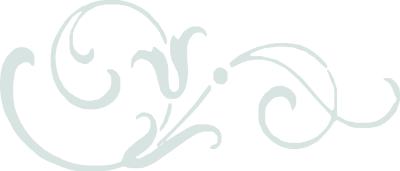Philosophy + FAQ
Here you can find answers to the most frequently asked questions about our tango classes and teaching method. You are always welcome to send us a message or give us a call if you could not find the answer to your question.
Our Teaching Method
The Tango Studio is devoted to teaching Argentine Tango for social dancing. Studying tango in Buenos Aires since 1999 we have had the opportunity to learn from dancers who grew up in the Golden Age of Tango as well as many world renowned contemporary tango dancers. We have over 15 years experience teaching tango and understand that everyone learns differently. We pride ourselves in seeing the dancer in every body. All of our classes incorporate these five elements: Body Awareness and Technique Understanding your alignment, balance, axis, ease of movement, how to engage/relax/breathe through movements, proper lines, foot positions etc.. Communication and Connection Learning the subtle body language needed for the communication between the dancers so you can improvise an entire song with very basic vocabulary. Musicality Listening and moving with the music and explaining important concepts that dancers need for interpreting the music. We also try to demonstrate how we are ’feeling’ the music. Sequences and Improvisation Integrating both sequences and improvisation skills are needed as you develop as a dancer. We balance both with all levels of students from beginner through advanced. Culture Understanding of the cultural aspects and codes of the social dance.
“Tango is a feeling. It is not difficult to learn. Nor is it easy. But it is not danced by figures and steps. It is danced to the music … learning how to walk it, to listen to it, to feel it, because it becomes a part of you that you cannot detach. After that, each person, each dancer learns his or her own style.”
-Letter from Tete to Tango Dancers Around the World
Buenos Aires 1998
Where do I start?
The very best place to start learning with us is to take The Beginner Workshop. In this 2 hour workshop you get a chance to experience what tango is all about and just as important you get a feeling for us as teachers and dancers. Then most students go on to take the Level 1 Series. If the Beginner Workshop does not fit your schedule you can start directly with the Level 1 Class or schedule a Private Lesson.
Can I skip the fundamentals classes?
The basis of the communication and body mechanics are unique to Argentine Tango and everyone needs to learn the fundamentals. Having dance experience may help you learn more quickly however even professional dancers from other disciplines need to start with the fundamentals in order to avoid bad habits or ‘relax’ certain incorporated postures that may interfere with the enjoyment of Tango.
Will tango be too difficult for me?
No dance experience? No problem! Tango is a popular social dance that anyone can learn. It is basically walking in an embrace. You will learn a code of subtle body language that allows you to improvise while dancing. The communication and footwork may take some persistence and patience to polish but there are no difficult movements. Do not confuse the acrobatics portrayed in stage tango with the social dance.
How long will it take to learn Tango?
Everyone learns differently so that is not an easy question to answer. We have seen dedicated students out social dancing within several weeks of starting classes while some students take quite a bit longer to feel comfortable going to a milonga. Since we are developing your ability to improvise we do not constantly repeat the same sequences rather we are training you to gain control over your movements and to be able to communicate with your partner. As your teachers we will break things down, build your confidence in the technique and help you understand the music so that you will be able to improvise an entire song before you know it! Tango is an intricate art form that will keep you compelled and interested to keep exploring for the rest of your life. Remember the journey is the destination and you will be amazed at how much more than just dance you will learn in the process.
What style do you teach?
Tango can sometimes be categorized into various styles (salon/villa urquiza/milonguero/nuevo/nuevo-milonguero) though we see it as having only two distinguishing categories: social dancing and stage tango. Tango grew up in the streets and evolved in an atmosphere of bravado and innovation. In Buenos Aires and Uruguay from 1900 -1950 one would learn tango from a neighbor, brother or aunt and the way you danced was determined by the neighborhood where you lived, the space on the floor where you danced as well as the changing sound of the popular orchestras at a given time period. Today tango is a vibrant living dance with thousands of teachers and schools around the world. Sadly some people who put emphasis on styles claim that their style is more authentic. Apart from this simply being untrue it also fosters intolerance. We teach tango for social dancing and we want our students to have the skills to dance with anyone in the milongas. We give students an understanding of the technique for close embrace and the ability to move within the embrace with comfort, connection and musicality. Eventually they will discover that part of themselves which they can add to create their own style.
Do you teach sequences?
Everyone needs to study some sequences while learning with the goal that they become an incorporated body language which can be used to improvise a conversation between partners. The basic movement in tango is the walk and when you combine walking in different directions, in parallel and in crossed system you will create patterns or sequences (ocho cortado, sanguichito, el basico). Some dancers choose to keep their vocabulary succinct or feel that certain movements are not comfortable for them. With the fundamentals you can enjoy dancing and keep advancing by developing your sense of musicality. Other dancers may like the challenge of learning more complex vocabulary (giros, sacadas, boleos, changes in axis) and embellishments. The vocabulary you use has nothing to do with the quality of the connection or the musicality as long as the dancer does the work to understand the technique and integrate the movements so they are able to move properly with their partner and with the music. There is also the possibility to dedicate yourself to understanding the underlying structure of the dance (three possible steps: forward cross, back cross, open step – two directions – four legs) where you do not need sequences to keep learning as you can move within the structure and create infinite possibilities.
What about learning steps from a video series or online tutorial?
At an advanced level you could add to your vocabulary by learning this way however first you need to understand the body language. In our classes we make sure you learn the necessary body awareness and the partner communication so that you will be able to move as a response to listening to the other. The interconnected lead/follow communication is what creates the dance. Once you are able to truly be in the moment, listen to the other and respond spontaneously in the context of the music… that is what it is to dance tango!
How will I know if I am ready for advanced classes?
Learning the fundamentals of tango is like learning a language. The self awareness and communication we transmit in the Level 1 and 2 Classes is something that is incorporated through a process. Each person will be able to integrate these elements at their own pace. Our goal is for you to feel at ease and in control of your balance, to stay connected to your partner and feel a joy and freedom to improvise and express the music. One way to know if you are ready to take more advanced classes is to ask yourself if you are feeling these things on a regular basis when dancing. It is important to devote ample time to the fundamentals so you will be able to learn more complicated dynamics and musicality without sacrificing the integrity of your movement or the essence of the connection. With that being said we never want to discourage eager students. If you are still fine tuning the fundamentals but really want to come to an advanced class we ask that you arrange to come with a partner and not rotate so that it is fair for the more experienced dancers in class. Please always feel free to talk to us in person about this!
Do I need a partner for the classes? Do we rotate partners in class?
You do not need a partner when registering for a series of level classes. We role balance all our series. We encourage rotating partners in class to help you develop sensitivity in the lead and follow which is the basis of communication in the social dance. You may however choose to come with a partner to any class and we understand that for some people rotating in class may feel intimidating at first. We will never force anyone to rotate if they prefer to work with their partner.
What kind of clothing should I wear?
You should wear comfortable clothes that do not restrict your movement. There is no dress code for the classes, wear clothes that make you feel good. However take extra care to make sure you have good hygiene. You are embracing people and in very close contact. Be sure that you have a clean body, clean clothes and fresh breath. Don’t go over board on the perfumes as people may have allergies to strong fragrances.
What kind of shoes should I wear?
Wear shoes that are comfortable and allow you to pivot on a wood floor. Do not use rubber sole shoes that stick and cause you to strain your knees. Dance shoes are not required for class and you can even dance in socks! If you do want to invest in real tango shoes you will find that there are many brands, most of which are hand-made in Buenos Aires or Italy. The brands we personally recommend are SUR, Comme Il Faut, DNI and two brands which are imported and sold locally, Tangolera and Turquoise. You can buy online however for your first pair of shoes you really need to try them on to assure a good fit and decide the right heal height. Check out the option of buying lightly worn (sometimes never worn) shoes at the local Tango Shoe Exchange page on Facebook.
Where is the Tango Studio located? How do I get there? Is there parking?
The Tango Studio is centrally located at 2474 Prince Edward St., Vancouver. Only five minutes from downtown the studio is in the Mount Pleasant neighbourhood at the corner of Broadway and Prince Edward St. Easily accessible by public transit Commercial Broadway Skytrain / Line 99 bus. There is plenty of free parking both on Broadway and the side streets all around the studio as well as the shopping centre across the street which closes at 9pm.


The Tango Studio Vancouver
Santiago & Deborah
T: 604 338 4069
E: info@thetangostudio.com
2474 Prince Edward St.
Vancouver, BC Canada
